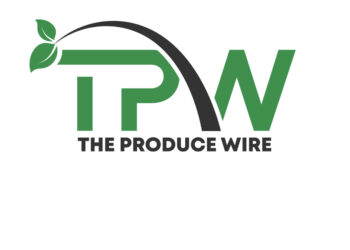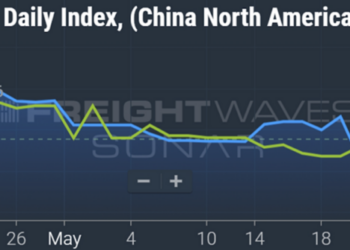Food trade groups spar with Sacramento over additives
At FreightWaves, we often discuss potential California laws because the state typically implements more restrictive regulations on businesses than other states impose and those regulations are impactful nationwide. That includes environmental regulations for trucks and locomotives as well as animal welfare regulations that impact the meat industry.
Along similar lines, the state may ban certain additives and food dyes in legislation that is more restrictive than current federal regulations. Assembly Bill 418, recently passed by the State Assembly and headed to the State Senate, would ban five food and color additives: titanium dioxide, Red Dye No. 3, brominated vegetable oil, potassium bromate and propylparaben. Titanium dioxide can be found in a variety of consumable products including candy (which is why opponents of the bill refer to it as the “Skittles ban”), gum, chocolate and coffee creamers, among many others. If passed, the ban would take effect in January 2025.
Supporters of the bill, including many Democratic lawmakers, say that the chemicals are linked to an increased risk of cancer and could harm the reproductive and immune systems. They cite studies done on rats, bans by the European Food Safety Authority (EFSA) and the Food and Drug Administration’s ban on Red Dye No. 3 when used in cosmetics. In short, supporters say that the FDA has not been on top of the issue and its approval of the additives in the 1970s for use in food and supplements is outdated.
The Consumer Brands Association and the National Confectioners Association oppose the bill on behalf of their members in the CPG industry. The trade groups say:
The bill subverts the FDA’s regulatory oversight and should be outside California’s jurisdiction.
All five additives have successfully undergone extensive FDA review for use in food.
Studies done on rats are not relevant because additives are not absorbed in humans to the same degree.
Regulatory agencies in the U.K. and Canada disagree with the EFSA’s findings.
If the new regulations come to fruition, CPGs will likely have to make greater use of natural colors (which CPGs say consumers do not want) and revamp their ingredients. Most industry observers believe that new formulas would be used in products distributed nationwide.
For additional detail, see articles from Natural Products Insider and The Wall Street Journal.
Rail employment levels (blue line, compared to total rail carloads in white) have not fully recovered from the volume drop in the early days of the pandemic.
Will changes to work rules fix rail service?
The Class I railroads have attributed poor service levels of the past few years to not having sufficient numbers of workers in the operating crafts. Unlike past economic cycles, the railroads had difficulty hiring back workers when volume recovered after a period of weakness in the early days of the pandemic. As workers’ priorities have shifted, higher pay relative to other industrial positions no longer seems to be enough to keep the railroads fully staffed. The issues that came to the forefront in last year’s labor discussions, and are now being addressed, include worker sick days, scheduling and furloughs. To that end, in recent weeks, the Class I railroads have come to numerous agreements with unions giving workers additional sick days, Union Pacific reached an agreement with the Brotherhood of Locomotive Engineers and Trainmen on work schedules (11 days on, four off), and Norfolk Southern and Canadian National Railway have promised not to furlough workers if a volume downturn ensues. Also relevant for CPGs, the railroads are looking to do more in the underserved north-south lanes, which include CPKC taking delivery of refrigerated containers and a newly announced partnership between Union Pacific and Ferromex to offer transcontinental service.
To subscribe to The Stockout, FreightWaves’ CPG supply chain newsletter, click here.
The post The Stockout: Food trade groups oppose California bill on additives appeared first on FreightWaves.














